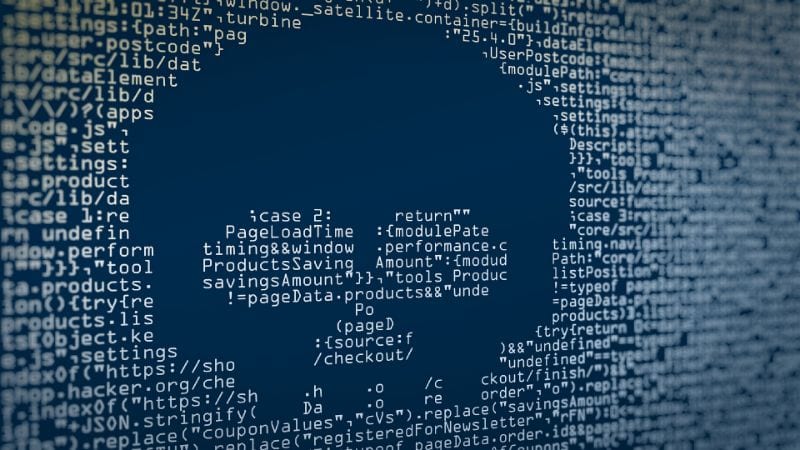Banks are an essential part of our lives. They not only protect our savings, but also help to provide a means to secure loans for homes, cars, and new businesses. Banks, like most other organizations, have undergone significant digital transformations in recent years. Now, consumers can use an app to apply for new lines of credit and pay their friends back for a night out or make online purchases. However, with the rise of technology, cybercriminals have found ways to target banking and their customers online accounts for fraudulent activities.
Want to learn more about today’s cybercrime landscape?
Read the 2023 Cybercrime Prevention Playbook and get started today!
What is bank fraud?
Bank fraud is a criminal activity that involves the use of deception or misrepresentation to obtain money or assets from a bank or its customers. There are several types of bank fraud, including:
- Identity theft: when someone obtains another person's personal information, such as credit card numbers or social security numbers, and uses it for illegal purposes.
- Check fraud: involves the use of fake checks or stolen checks to obtain money from an account.
- Loan fraud: occurs when someone obtains loans using false information.
Regardless of type of fraud, these criminal activities can cause significant financial harm to individuals, the bank, and the economy as a whole.
The connection between money laundering and bank fraud
Money laundering and bank fraud are often connected, as individuals may use fraudulent means to move or hide illegally obtained funds. Money laundering involves disguising the proceeds of illegal activities as legitimate funds. This can include using multiple bank accounts, shell companies, or other methods to obscure the origin of the funds.
Cyberattacks that enable fraud in banking
Unfortunately for banks and consumers, cybercriminals have a multitude of tactics at their disposal that can enable them to commit fraud. Many of these attacks are aimed at duping unsuspecting consumers and bank employees into divulging sensitive or personal information. This information can be used for downstream cybercrime, like opening a fraudulent line of credit, or sold on the dark web.
Phishing and other social engineering scams
One of the most common types of bank fraud is phishing scams. These scams involve fraudsters sending fake emails or a text message to unsuspecting individuals in an attempt to trick them into sharing important information such as login credentials, phone numbers, social security numbers, and credit card details or other financial information. Phishing scams often use urgent language and threats to create a sense of urgency in the victim, making it more likely that they will comply with the scammer's requests.
Malware
Malware is malicious software that can be used to steal sensitive information such as login credentials or personal data. Malware-infected devices can also be hijacked to form botnets that are used to launch large-scale attacks. To protect against malware attacks, banks use various security measures such as firewalls and antivirus software. Customers can also protect themselves by being vigilant and avoiding suspicious emails or websites.
Insider fraud
Insider fraud occurs when a bank employee or third-party contractor misuses their position to commit fraud against the bank or its customers. Examples of insider fraud include embezzlement, identity theft, and manipulation of accounts.
To prevent and detect insider fraud, banks can conduct background checks and provide training to employees on how to identify and report suspicious activity. Additionally, customers should be encouraged to regularly monitor their bank accounts and report any unauthorized transactions immediately.
Overview of cybercrime and digital fraud
In today's digital age, understanding cybercrime and digital fraud is crucial for banks and their customers. Cybercrime refers to criminal activities that are committed using the internet or other digital communication technologies. Types of cybercrime include hacking, phishing, identity theft, and malware attacks.
Digital fraud involves the use of technology to deceive individuals or organizations for financial gain. In banks, common forms of digital fraud include credit card fraud, account takeover, and fake investment schemes. Overall, banks must remain vigilant in their efforts to prevent cybercrime and digital fraud in order to protect both themselves and their customers.
Role of bots in cybercrime against banks
Bots play a significant role in crimes against banks. Bots are automated programs that can be used to steal login credentials, perform fraudulent transactions or even launch distributed denial of service (DDoS) attacks. Bots have become more advanced in recent years and can even mimic human user behavior, which can make them difficult to detect.
To combat bot attacks, banks should invest in a solution that helps them to identify suspicious activity, like anomalous traffic, and prevent fraudulent transactions. In addition to implementing technological solutions, it's important for banks to educate their customers on the importance of taking necessary precautions, such as using strong passwords, using two-factor authentication, and avoiding clicking on suspicious links or emails.
The future of bank fraud
As digital banking becomes more prevalent, fraudsters are finding new ways to exploit security loopholes to commit forgery. While certain types of financial fraud, including account takeover and social engineering, are becoming increasingly frequent a new trend in bank fraud is the use of deepfakes and other synthetic media to trick bank employees into creating accounts or taking out loans. Synthetic fraud can also dupe customers into making fraudulent transactions.
With the increase in digitalization, banks are developing artificial intelligence and machine learning tools to detect and prevent bank account fraud in real time. These preventative measures hold great promise for the future of banking security, but only as far as they can keep up with evolving tactics used by criminals.
Arkose Labs secures banks from cybercrime
As cybercriminals continue to evolve their tactics and techniques, so do security teams. Providing a strong deterrent to cybercrime means having the detection and mitigation capabilities that stop advanced threats like bots and botnets. Arkose Labs provides a powerful intermediary step between traditional risk-based and multi-factor authentication. Interactive challenges, in the form of Arkose MatchKey challenges, eliminate all automated attacks and drive up the cost of human-driven cybercrime – while enhancing user experience.
As cybercriminals hone their techniques, banks and financial institutions are dealing with increasing volumes of traffic, which is difficult to categorize as “good” or “bad.” Rather than piling on additional layers of threat scores—or slowing down users with out-of-band authentication—financial institutions need robust secondary screening delivered directly within the normal user workflow.
The Arkose Labs bot management platform analyzes data from user sessions to determine the context, behavior, and past reputation of every request. Traffic is classified and triaged based on its risk profile. Suspicious traffic is presented with enforcement challenges that differentiate between true users and cybercriminals. A continuous feedback loop slashes false positives and minimizes the impact on good users.
Book a demo today and learn how Arkose Labs can protect your business from advanced threats.
- What is bank fraud?
- The connection between money laundering and bank fraud
- Cyberattacks that enable fraud in banking
- Phishing and other social engineering scams
- Malware
- Insider fraud
- Overview of cybercrime and digital fraud
- Role of bots in cybercrime against banks
- The future of bank fraud
- Arkose Labs secures banks from cybercrime


